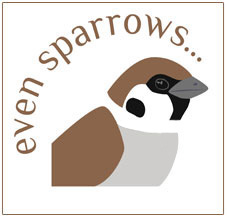

MY FAVOURITE BIRDS - PART FOUR
Posted: 14.06.25 in Articles category
MY FAVOURITE BIRDS - PART 4
This is the final instalment of the series about my favourite birds. Back in 2022 I compiled a list of my top ten… so here are my eighth, nineth and tenth choices. Let’s begin with the Toco Toucan – the only bird in my top ten list found exclusively abroad.
Toco Toucan. Unless you have been to Latin America, you would not have seen one of these in the wild. Yet it is a bird you can probably picture in your mind as its image is iconic - thanks to a famous advertising campaign for Guinness beer dating from the 1930s. The Toco Toucan is the largest type of toucan and measures the size of a feral pigeon. Its body, wings and tail are black; the face and neck are white; the feet are blue, and the dark eyes have large eye-rings of bare skin, the inner ring being blue and the outer orange. However, the huge yellow bill is its hallmark. That bill measures more than half its body length and enables the toucan to reach deep into tree-holes to access food unavailable to other birds and ransack their nests.
I have seen Toco Toucans only once, but the memory still burns bright. My wife and I were on a retirement treat birding holiday in Argentina back in November 2018 and we arrived for a two-night stay by Igazu Falls - the huge waterfall that features in the film The Mission starring Jeremy Irons and Robert de Niro. I wish I could describe it to you, but I simply do not have the words to convey its magnificence nor the wonder of seeing and hearing so much rushing water. We stayed in a hotel within view of the falls, and within very close view of several toucans which we could see from our bedroom balcony. What extraordinary birds they looked, and somewhat unreal too. It was as if each had a very large plastic banana stuck to its face. Unmistakable and unlike any other bird I have seen. Definitely the bird of a 'once in a lifetime' holiday.
Tree Sparrow. The logo of Even Sparrows and one of my garden residents. I love their neat and clean appearance, chestnut caps, white collars, small black bibs and black cheek patches. Males and females look the same as dapper little birds that are always active round my winter feeders. I enjoy hearing their chatter too. Like groups of House Sparrows, Tree Sparrows seem to chatter continually, but their vocalisations are higher pitched, more musical, and altogether 'sweeter'. To me they make a more pleasing sound than their urban cousins, although I won't claim they are songsters in the mould of some North American sparrows.
It is good to report that our local population seems strong - a welcome reversal of their disastrous crash in the late twentieth century when numbers in the United Kingdom plummeted by more than ninety per cent. So far this century their numbers nationally have doubled, although there are still far fewer in the British countryside than in 1900. Unlike House Sparrows, they are rural birds. I see and hear them locally flocking in the hedgerows around my village, and it seems all too evident that the hedgerow's widespread removal severely affected these birds. Their demise surely acts as a warning that any creatures can be vulnerable to human activity. We have a God-given duty of care to protect wildlife as I argue in my book, ‘Look at the Birds of the Air.’
Waxwing. The bird that sparked my childhood interest in ornithology, perversely because I did not see one in our garden as I was at school. It took ten years to see my first while on a birding holiday in Scotland, but since then I have seen many, particularly in Newcastle and Northumberland. From a distance in silhouette Waxwings can look like Starlings, but see them well and their colours are amazing. Reddish-buff bodies and wings with black primary feathers that are edged with wax-yellow. They have narrow black eye-masks, black bibs, and distinctive large crests. They look unmistakable and so is their sound - a soft trill that carries a distance and usually alerts me to their presence. I typically see Waxwings in late autumn - one of the last migrants to arrive for our milder British winter. Some years they turn up in their thousands, a phenomenon known to birders as a 'Waxwing year'. Yet even in poor years I invariably see them locally as the housing estate where I live is currently a county 'hotspot'.
Selecting so few birds is arbitrary when a full list of my favourite birds would number nearer one hundred. I have not listed any warblers above, despite them being one of my favourite kinds of bird on account of their energy as they flit about in a constant search for insects. I love seeing woodpeckers, I get a buzz watching eagles and the sight of a Kingfisher is always a personal thrill. I feel spoilt for choice when I think of crows as favourite birds. As well as the Raven, I would choose the Jays that visit my garden and the Choughs I first saw on honeymoon in Wales - birds that similarly are great to see in tumbling flight. There are also two types of magpie I have seen abroad that I find attractive. The Azure-winged Magpies of Iberia look beautiful in sunlight with their azure-blue wings and tail, while the Rufous Treepies I saw for the first time in India in February 2020 are known locally as 'tiger birds' on account of their subtle plumage hues of orange-brown, black, and white. Even gulls can wow me today - species like the Kittiwake and the flocks of Common Gull that fly in V formation over my house in the winter gloaming. I find increasingly that birds are amazing!